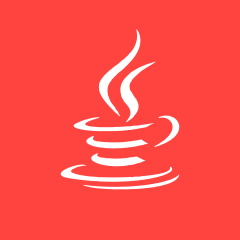Java中的字节数组和Int转换
我在使用这两个功能时遇到了一些困难:byteArrayToInt和intToByteArray。
问题是,如果我使用一个来到达另一个,而使用那个结果去到达前一个,则结果是不同的,如下面的示例所示。
我在代码中找不到错误。任何想法都非常欢迎。谢谢。
public static void main(String[] args)
{
int a = 123;
byte[] aBytes = intToByteArray(a);
int a2 = byteArrayToInt(aBytes);
System.out.println(a); // prints '123'
System.out.println(aBytes); // prints '[B@459189e1'
System.out.println(a2); // prints '2063597568
System.out.println(intToByteArray(a2)); // prints '[B@459189e1'
}
public static int byteArrayToInt(byte[] b)
{
int value = 0;
for (int i = 0; i < 4; i++) {
int shift = (4 - 1 - i) * 8;
value += (b[i] & 0x000000FF) << shift;
}
return value;
}
public static byte[] intToByteArray(int a)
{
byte[] ret = new byte[4];
ret[0] = (byte) (a & 0xFF);
ret[1] = (byte) ((a >> 8) & 0xFF);
ret[2] = (byte) ((a >> 16) & 0xFF);
ret[3] = (byte) ((a >> 24) & 0xFF);
return ret;
}
 慕桂英4014372
慕桂英40143723回答
-

弑天下
您正在两种方法之间交换字节序。您已将intToByteArray(int a)的低位分配给ret[0],但随后byteArrayToInt(byte[] b)又将b[0]结果的高位分配了。您需要反转其中一个,例如:public static byte[] intToByteArray(int a){ byte[] ret = new byte[4]; ret[3] = (byte) (a & 0xFF); ret[2] = (byte) ((a >> 8) & 0xFF); ret[1] = (byte) ((a >> 16) & 0xFF); ret[0] = (byte) ((a >> 24) & 0xFF); return ret;} -

慕桂英546537
这需要做很多工作:public static int byteArrayToLeInt(byte[] b) { final ByteBuffer bb = ByteBuffer.wrap(b); bb.order(ByteOrder.LITTLE_ENDIAN); return bb.getInt();}public static byte[] leIntToByteArray(int i) { final ByteBuffer bb = ByteBuffer.allocate(Integer.SIZE / Byte.SIZE); bb.order(ByteOrder.LITTLE_ENDIAN); bb.putInt(i); return bb.array();}此方法使用Java ByteBuffer和程序包中的ByteOrder功能java.nio。在需要可读性的地方,此代码应该是首选。它也应该很容易记住。我在这里显示了Little Endian字节顺序。要创建Big Endian版本,您只需忽略对的调用order(ByteOrder)。在性能优先于可读性的代码中(大约快10倍):public static int byteArrayToLeInt(byte[] encodedValue) { int value = (encodedValue[3] << (Byte.SIZE * 3)); value |= (encodedValue[2] & 0xFF) << (Byte.SIZE * 2); value |= (encodedValue[1] & 0xFF) << (Byte.SIZE * 1); value |= (encodedValue[0] & 0xFF); return value;}public static byte[] leIntToByteArray(int value) { byte[] encodedValue = new byte[Integer.SIZE / Byte.SIZE]; encodedValue[3] = (byte) (value >> Byte.SIZE * 3); encodedValue[2] = (byte) (value >> Byte.SIZE * 2); encodedValue[1] = (byte) (value >> Byte.SIZE); encodedValue[0] = (byte) value; return encodedValue;}只需反转字节数组索引以从零计数到三即可创建此代码的Big Endian版本。笔记:在Java 8中,您还可以使用Integer.BYTES常量,该常量比更为简洁Integer.SIZE / Byte.SIZE。
 随时随地看视频慕课网APP
随时随地看视频慕课网APP
相关分类


 Java
Java